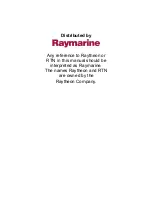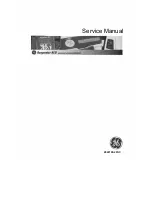
7.
Verify that the A-Phase flux-shift tripper on the VFI
tester operates immediately.
8. Depress the A-Phase flux-shift tripper.
9. Place the 120 A Fault Current switch into the OFF
position.
10. Place the Phase Select Switch on the VFI tester into
the B-PHASE position.
11. Press and release the Control Test button to initiate
flow of simulated fault current to the control.
12. Verify that the B-Phase flux-shift tripper on the VFI
tester operates after 1 second ± 10%.
13. Depress the B-Phase flux-shift tripper.
14. Place the 30 A Fault Current switch into the ON
position. All other Fault Current switches should be in
the OFF position.
15. Press and release the Control Test button to initiate
flow of simulated fault current to the control.
16. Verify that the B-Phase flux-shift tripper on the VFI
tester operates immediately.
17. Depress the B-Phase flux-shift tripper.
18. Place the 120 A Fault Current switch into the OFF
position.
19. Place the Phase Select Switch on the VFI tester into
the C-PHASE position.
20. Press and release the Control Test button to initiate
flow of simulated fault current to the control.
21. Verify that the C-Phase flux-shift tripper on the VFI
tester operates after 3 seconds ± 10%.
22. Depress the C-Phase flux-shift tripper.
23. Place the 30 A Fault Current switch into the ON
position. All other Fault Current switches should be in
the OFF position.
24. Press and release the Control Test button to initiate
flow of simulated fault current to the control.
25. Verify that the C-Phase flux-shift tripper on the VFI
tester operates immediately.
26. Depress the C-Phase flux-shift tripper.
27. Place the 120 A Fault Current switch into the OFF
position.
Control setup – ground fault trip during inrush test
1.
Set the minimum trip levels on A-Phase, B-Phase,
C-Phase, and Ground to 50 A.
2. Place the Ground Trip Block switch into the OFF
position.
3. Place the Phase and Ground Instantaneous Trip
switches into the ON position.
4. Place the Ground Trip Block During Inrush switch into
the OFF position.
5. Place the Inrush Restraint switch into the ON position.
6. Set the A-Phase, B-Phase, and C-Phase Inrush
Restraint Minimum Trip Multiplier switches for 5X (4X +
1X default setting).
Test procedure – ground gault trip during inrush test
1.
Place the 120 A Fault Current switch on the VFI tester
into the ON position. All other Fault Current switches
should be in the OFF position.
2. Place the Phase Select Switch on the VFI tester into
the A-PHASE position.
3. Press and release the Control Test button to initiate
flow of simulated fault current to the control.
4. Verify that the A-Phase, B-Phase, and C-Phase flux-shift
trippers on the VFI tester all operate within 50 ms of
the fault current being applied.
SCADA board customer connections tests (TPG
only)
The following materials are required for SCADA board
testing; small flat-blade screwdriver; Fluke 87 Multimeter or
equivalent; 3” jumper wire; Ac power cord with wire ends
stripped.
1.
Verify that the settings of the tester and control are
as described in the
Initial Tester Setup
and
Initial Tri-
Phase/TPG Control Setup
sections of this bulletin.
Minimum trip multiplier enable readback status test
1.
Place the Minimum Trip Multiplier switch into the
INCREASED position. Refer to Figure 11.
2. Using the multimeter, verify continuity between pin 8
and 18 of the Customer Connections Terminal Block.
3. Place the Minimum Trip Multiplier switch into the
NORMAL position. Refer to Figure 11.
4. Using the multimeter, verify non-continuity between
pins 8 and 18 of the Customer Connections Terminal
Block.
Ground trip block enable readback status test
1.
Place the Ground Trip Block switch into the ON
position.
2. Using the multimeter, verify continuity between pin 8
and 17 of the Customer Connections Terminal Block.
3. Place the Minimum Trip Multiplier switch into the
NORMAL position.
4. Using the multimeter, verify non-continuity between
pins 8 and 17 of the Customer Connections Terminal
Block.
Operating Instructions
MN285001EN December 2018
15










































